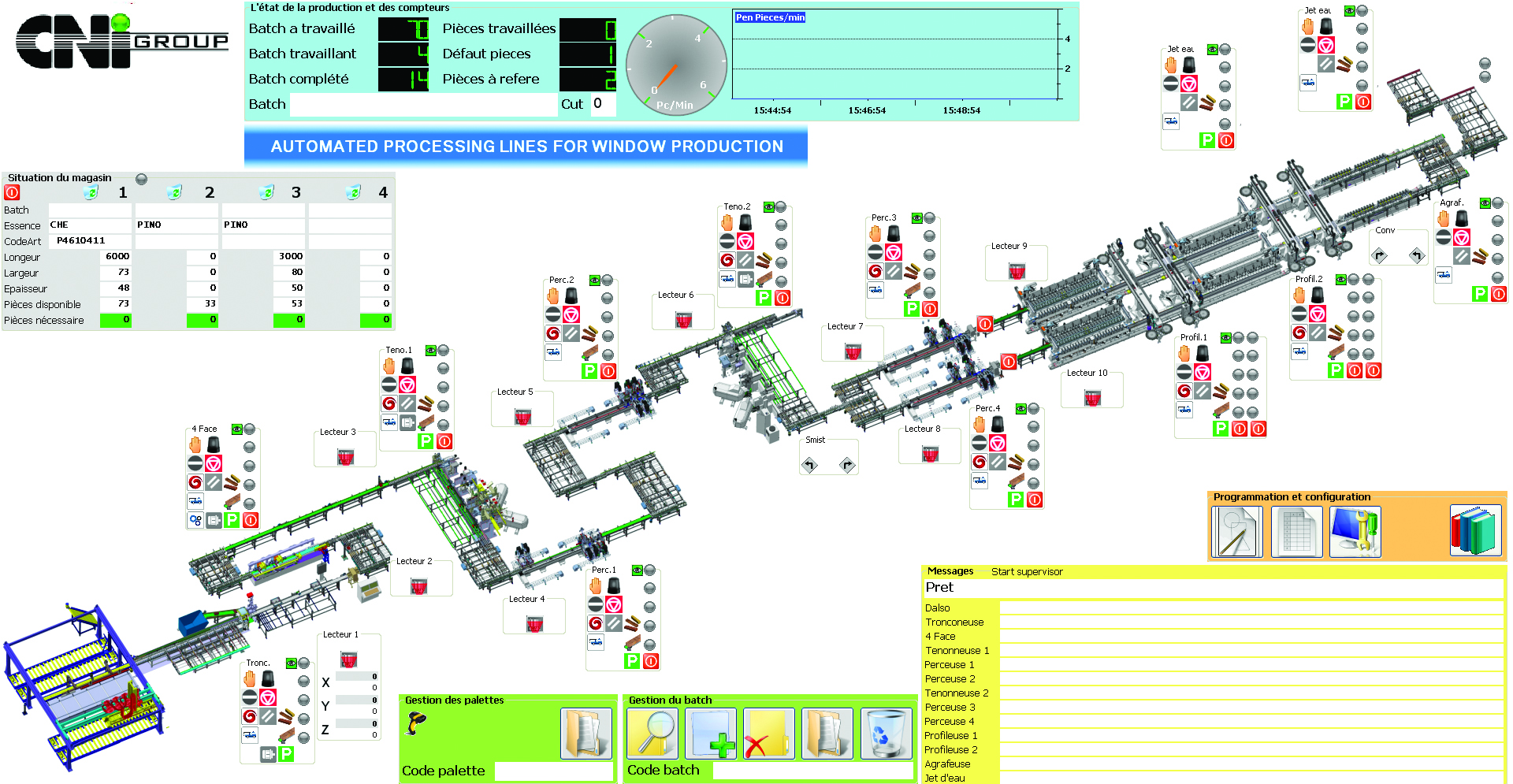
Case History
Automatic lines for wooden windows manufacturing
CNI manages high-capacity production lines, conceived, designed and built according to customer specifications, both in terms of composition, processes to be performed, performance required and interfacing with existing management systems to integrate them perfectly into the customer’s production context.
The complete management of a production line requires various skills that can be found in the Group’s Business Units.
Business unit Skills
High-performance multi-center Numerical Controls to be able to move and interpolate hundreds of axes in groups along the entire path of the line, with customized logic and kinematics, but above all guaranteeing performance and execution times not found among the products of its competitors.
Supervisors able to manage the entire flow of information on the line like an orchestra conductor: interfacing with the customer’s management system for the acquisition of batches to be produced, sending of processing programs to the machines, management of consents, management of automatic warehouses, collection of production statistics and any special adaptation requests from the customer.
Inspection and production quality control systems integrated with line automation allow the identification of defective parts and their elimination from the production flow. Especially in high-productivity lines, where the operator does not have the possibility of performing a punctual and complete check on all the parts produced, these inspection systems prevent defective parts from being released. Depending on the point of the line where they are inspected, if rejected immediately, they can avoid wasting time, tools and materials.
CAD/CAM systems integrated into the supervisor to automatically generate programs for each individual machine in the line. Automatic generation of programs immediately before their execution, starting from the data passed from the customer’s management system, guarantees maximum flexibility of the system. Given the complexity of the lines, processes and pieces to be produced, manual programming by the operator would in fact be too difficult and at risk of error.

